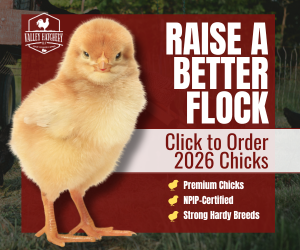At our farm expo I saw something on a feed additive for chickens called Camelina. Does anyone use it or know anything about it? It seems interesting and I want to know where I can get it.
Navigation
Install the app
How to install the app on iOS
Follow along with the video below to see how to install our site as a web app on your home screen.
Note: This feature may not be available in some browsers.
More options
You are using an out of date browser. It may not display this or other websites correctly.
You should upgrade or use an alternative browser.
You should upgrade or use an alternative browser.
Anyone using camelina in their feed?
- Thread starter ih66series
- Start date
More options
Who Replied?The organic feed mix I am buying uses camelina meal, so I have been reading up on it.
We here at Scratch and Peck just love this plant! Camelina meal is an essential component of our animal feeds to boost protein levels. We are currently working with a group of Western Washington farmers to investigate the potential of growing camelina even more locally.
http://www.scratchandpeck.com/camelina
http://www.scratchandpeck.com/camelina
Camelina meal is an excellent source of Omega-3 in livestock and poultry feeds. It is believed that the inclusion of Omega-3 fatty acids in animal feeds will bring an increase in health, reduce stress, increase animal body mass, daily dry matter intake and will provide reproductive beneifts. The level of Omega-3 fatty acids are raised approximately ten fold in chickens, six fold in pork and two fold in beef when Omega-3 ingredients are included in their feed rations.
http://camelinameal.blogspot.com/
http://camelinameal.blogspot.com/
Camelina meal, the extruded product remaining after cold extraction of the oil, generally contains 10% 15% oil (close to 30% of the oil consists of omega-3 fatty acids) and 36% protein.
http://camelinameal.blogspot.com/
http://camelinameal.blogspot.com/
Poultry
Camelina meal was analyzed as an ingredient for production of omega-3 rich eggs. This study was done in collaboration with Nick Dale at the University
of Georgia. Poultry readily consumed feeds containing up to 15% camelina meal. There were not adverse effects on chicken health or egg production. The fatty
acid profile of yolks from eggs from chickens fed different levels of camelina (0%, 5%, 10%, 15%) were analyzed for omega-3 (C18:3) content. The content of
omega-3 in the egg increased with increasing camelina content in the feed (Fig. 4). Currently, camelina meal is being fed to nearly 40,000 laying hens in Montana. The camelina eggs contain enriched levels of linolenic acid (Fig. 4). The increase in the omega-3 content is relative to the percentage of camelina meal in the feed.
http://www.hort.purdue.edu/newcrop/ncnu07/pdfs/pilgeram129-131.pdf
~Shannon
Edited to add last link
Camelina meal was analyzed as an ingredient for production of omega-3 rich eggs. This study was done in collaboration with Nick Dale at the University
of Georgia. Poultry readily consumed feeds containing up to 15% camelina meal. There were not adverse effects on chicken health or egg production. The fatty
acid profile of yolks from eggs from chickens fed different levels of camelina (0%, 5%, 10%, 15%) were analyzed for omega-3 (C18:3) content. The content of
omega-3 in the egg increased with increasing camelina content in the feed (Fig. 4). Currently, camelina meal is being fed to nearly 40,000 laying hens in Montana. The camelina eggs contain enriched levels of linolenic acid (Fig. 4). The increase in the omega-3 content is relative to the percentage of camelina meal in the feed.
http://www.hort.purdue.edu/newcrop/ncnu07/pdfs/pilgeram129-131.pdf
~Shannon
Edited to add last link
Last edited:
New posts New threads Active threads
-
Latest threads
-
-
-
-
If you've integrated adult hens, how long did it take for them to sort themselves out?
- Started by EmmaDonovan
- Replies: 2
-
-
-
Threads with more replies in the last 15 days
-
-
Open Contest Cutest Couples Photo Contest—Poultry Edition
- Started by Lacy Duckwing
- Replies: 124
-
BYC's 52-week Photography Challenge. Week 2: (Jan 12-18, 2026). Theme: Flock Star
- Started by Lacy Duckwing
- Replies: 87
-
Favorite Chicken Breed?
- Started by urlocalcrazychickenlady
- Replies: 76
-
Open Contest Cutest Couples Photo Contest—"Other Critter" Edition
- Started by oldhenlikesdogs
- Replies: 55
-
×



